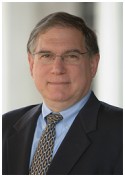Archived: Helping to Reverse America’s “Brain Drain”
February 1, 2011
Continue Reading
Archived: New Blog from NIH Extramural Research Chief
January 25, 2011
Continue Reading
Archived: Comment on Proposed NIH Organizational Changes via New Feedback Site
January 19, 2011
Continue Reading
Archived: Stepping Down as NIGMS Director
December 6, 2010
Continue Reading
Archived: Assessing the Outcomes of NIGMS Glue Grants
November 5, 2010
Continue Reading
Archived: National Festival Put Science in the Spotlight
October 28, 2010
Continue Reading
Archived: Nation’s Top Science Honor to Benkovic, Lindquist, Others
October 20, 2010
Continue Reading
Archived: Nobel News
October 6, 2010
Continue Reading
Archived: New NIH Principal Deputy Director
August 30, 2010
Continue Reading


 NIH recently launched a new site for communication with the scientific community, http://feedback.nih.gov/. The site has already been quite active, since it requests input on a proposed National Center for Advancing Translational Sciences (NCATS) and a proposed institute focused on substance use, abuse and addiction research.
NIH recently launched a new site for communication with the scientific community, http://feedback.nih.gov/. The site has already been quite active, since it requests input on a proposed National Center for Advancing Translational Sciences (NCATS) and a proposed institute focused on substance use, abuse and addiction research. In September 2009, we announced that we were not reissuing the funding opportunity announcement for our Large-Scale Collaborative Project Awards (Glue Grant) program, which has supported research teams tackling significant and complex problems that are beyond the means of any one research group. We are currently assessing the need for this type of support and how best to manage programs of such scope and magnitude.
In September 2009, we announced that we were not reissuing the funding opportunity announcement for our Large-Scale Collaborative Project Awards (Glue Grant) program, which has supported research teams tackling significant and complex problems that are beyond the means of any one research group. We are currently assessing the need for this type of support and how best to manage programs of such scope and magnitude. Many kids (and adults) learned more about science and technology at the 2-week-long USA Science & Engineering Festival this month in Washington, D.C. The event featured hundreds of activities, including performances, workshops, demonstrations, tours of mobile labs and interactive games. A number of these were hosted by NIH, which was also one of the event sponsors, and most of its components. The festival wrapped up last weekend with a grand finale expo on the National Mall.
On Sunday, I helped host the NIGMS booth, where we presented a computer activity called “Supermodels of Science.” It showed how model organisms—from slimy worms to furry mice—help scientists learn more about human health. The kids were most excited about responding to the quiz questions at the end of each segment. They also were very interested in how scientists use GFP to make organisms glow different colors.
Other NIH activities included a musical performance by NIH Director Francis Collins; the National Human Genome Research Institute’s “Strawberry DNA Extraction,” a hands-on lab experiment where visitors used a soapy mixture to remove DNA from mashed strawberries; and the National Institute on Deafness and Other Communication Disorders’ “It’s a Noisy Planet,” where staff increased the volume on an iPod to demonstrate dangerous noise levels.
The festival’s turnout was excellent—about 500,000 people attended the weekend event. The kids were excited about science and eager to learn, and the volunteer staff members were thrilled to teach them about the research we support.
We’ll post the “Supermodels of Science” activity on the NIGMS Web site soon, and you’re welcome to use it in your own educational outreach efforts.
Many kids (and adults) learned more about science and technology at the 2-week-long USA Science & Engineering Festival this month in Washington, D.C. The event featured hundreds of activities, including performances, workshops, demonstrations, tours of mobile labs and interactive games. A number of these were hosted by NIH, which was also one of the event sponsors, and most of its components. The festival wrapped up last weekend with a grand finale expo on the National Mall.
On Sunday, I helped host the NIGMS booth, where we presented a computer activity called “Supermodels of Science.” It showed how model organisms—from slimy worms to furry mice—help scientists learn more about human health. The kids were most excited about responding to the quiz questions at the end of each segment. They also were very interested in how scientists use GFP to make organisms glow different colors.
Other NIH activities included a musical performance by NIH Director Francis Collins; the National Human Genome Research Institute’s “Strawberry DNA Extraction,” a hands-on lab experiment where visitors used a soapy mixture to remove DNA from mashed strawberries; and the National Institute on Deafness and Other Communication Disorders’ “It’s a Noisy Planet,” where staff increased the volume on an iPod to demonstrate dangerous noise levels.
The festival’s turnout was excellent—about 500,000 people attended the weekend event. The kids were excited about science and eager to learn, and the volunteer staff members were thrilled to teach them about the research we support.
We’ll post the “Supermodels of Science” activity on the NIGMS Web site soon, and you’re welcome to use it in your own educational outreach efforts.
 NIH Director Francis Collins recently named Larry Tabak as the NIH principal deputy director. Raynard Kington previously held this key position.
Over the years, I have worked closely with Dr. Tabak in many settings, including the Enhancing Peer Review initiative. A biochemist who continues to do research in the field of glycobiology, he is a firm supporter of investigator-initiated research and basic science. He is also a good listener and a creative problem solver.
Dr. Tabak, who has both D.D.S. and Ph.D. degrees, has directed NIH’s National Institute of Dental and Craniofacial Research for the past decade. In 2009, Dr. Kington—who had stepped in as acting director of NIH following the departure of Elias Zerhouni—tapped Dr. Tabak to be his acting deputy. Dr. Tabak’s achievements included playing an integral role in NIH Recovery Act activities.
Given the challenging issues that the principal deputy director often works on, Dr. Tabak’s experience—from dentist and bench scientist to scientific administrator—clearly provides him with valuable tools for the job. His experience as an endodontist may be particularly useful in some situations, allowing him to identify and "treat" potentially serious issues.
NIH Director Francis Collins recently named Larry Tabak as the NIH principal deputy director. Raynard Kington previously held this key position.
Over the years, I have worked closely with Dr. Tabak in many settings, including the Enhancing Peer Review initiative. A biochemist who continues to do research in the field of glycobiology, he is a firm supporter of investigator-initiated research and basic science. He is also a good listener and a creative problem solver.
Dr. Tabak, who has both D.D.S. and Ph.D. degrees, has directed NIH’s National Institute of Dental and Craniofacial Research for the past decade. In 2009, Dr. Kington—who had stepped in as acting director of NIH following the departure of Elias Zerhouni—tapped Dr. Tabak to be his acting deputy. Dr. Tabak’s achievements included playing an integral role in NIH Recovery Act activities.
Given the challenging issues that the principal deputy director often works on, Dr. Tabak’s experience—from dentist and bench scientist to scientific administrator—clearly provides him with valuable tools for the job. His experience as an endodontist may be particularly useful in some situations, allowing him to identify and "treat" potentially serious issues.